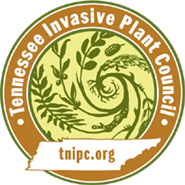Rottboellia cochinchinensis (Lour.) W.D. Clayton
Itchgrass
| Threat Level |
Category |
| Emerging |
Grass |

Description
Stems
Stems can reach a height of 1 to 10 feet (0.3 to 3 m) and are covered with stiff, irritating hairs. Brace roots occur on stems near the plant base.
Leaves
Leaf blades are flat, 5.9 to 17.7 inches (15 - 45 cm) long, 0.2 to 0.8 inches (5 to 20 mm) wide. Leaves are also covered with stiff, irritating hairs.
Flowers
The inflorescence is a jointed, cylindrical raceme, 1 to 6 inches (2.5 to 15.24 cm) long. Plants can flower more than once per season.
Fruit
Under favorable conditions, Itchgrass starts producing seeds 6 to 7 weeks after emergence. Seed production continues throughout the growing season. Seed-bearing spikelets separate from the plant and fall when mature.
Images
Photo: Julia Scher, USDA APHIS PPQ, Bugwood.org
More images of Rottboellia cochinchinensisLife History
Itchgrass is an annual grass that invades agricultural fields and other disturbed areas. The hairs on the stems and leaves can cause severe irritation, and the plant is unpalatable as fodder to livestock.
Habitat
Itchgrass invades disturbed and agricultural areas. It grows on roadsides and in woods at gaps in the canopy.
Origin and Distribution
Itchgrass is native to the Old World tropics, but is currently widespread throughout the world’s tropical regions and the southeastern United States. Seeds can be spread by birds, rodents and floodwaters.
Management Recommendations
Mechanical Control
Itchgrass can be controlled through burning, then a shallow plowing to encourage seed sprouting, followed by a deep plowing to bury sprouts. It may be necessary to allow fields to be fallow a year or two, followed by another burn to ensure control.
Chemical Control
Trifluralin and pendimethaline can be applied to soil as pre-emergent control and glyphosate or other effective post products can be used.
Biological Control
Headsmut of the correct variety can be used to create a bioherbicide.

